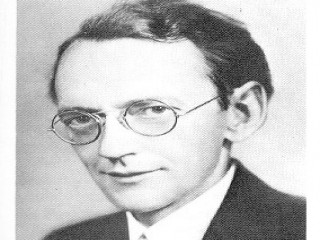
Karl Spencer Lashley biography
Date of birth : 1890-06-17
Date of death : 1958-08-07
Birthplace : Davis, West Virginia,U.S.
Nationality : American
Category : Science and Technology
Last modified : 2011-10-10
Credited as : Neuropsychologist , Brain Mechanisms and Intelligence, Brain injuries
The American neuropsychologist Karl Spencer Lashley (1890-1958) demonstrated relationships between animal behavior and the size and location of brain injuries, summarizing his findings in terms of the concepts of equipotentiality and mass action.
Karl Spencer Lashley was born at Davis, W. Va., on June 7, 1890. Even as a child he was interested in animals, an interest which continued throughout his adult life. His mother, Maggie Lashley, encouraged him in intellectual pursuits. After studying at the University of West Virginia and then taking a master's degree in bacteriology at the University of Pittsburgh, Lashley did doctoral and postdoctoral research at Johns Hopkins University. While at Hopkins, he was influenced by the zoologist H. S. Jennings, the psychiatrist Adolf Meyer, and the psychologist John B. Watson, the father of behaviorism.
Lashley was at once an experimental researcher and a psychological theoretician. His investigations were published in the leading journals and proceedings of major scientific societies. After several joint studies with Jennings, Lashley published his own thesis, "Inheritance in the Asexual Reproduction of Hydra. …" He collaborated with Watson in studying behavior in seabirds, acknowledging Watson's behavioristic approach the rest of his life.
Collaborating with Shepherd Ivory Franz, Lashley produced several papers on the effects of cerebral destruction upon retention and habit formation in rats. This was the beginning of his preoccupation with one of the persistent problems in psychology, that of cerebral localization. Earlier researchers Gall, Broca, Fritsch and Hitzig, Ferrier, and Munk were all believers in exact cerebral localization, whereas Flourens, Goltz, and Franz doubted it. The culmination of his localization experiments was Brain Mechanisms and Intelligence: A Quantitative Study of Injuries to the Brain (1929), his longest, most significant monograph.
In it he summarized his concepts of equipotentiality and mass action and marshaled the experimental evidence to support them. Thus he accounted for the absence of precise and persistent localization of function in the cortex. Lashley's experiments denied the simple similarity and correspondence, previously assumed, between associationistic connectionism and the neuronal theory of the brain as a mass of neurons connected by synapses.
In addition to his researches Lashley taught as professor of psychology at the universities of Minnesota and Chicago and at Harvard University. He held various honorary positions and lectureships, was on the editorial boards of numerous scientific journals, served as member of and adviser to governmental committees, and was elected to many scientific and philosophical societies. He died on Aug. 7, 1958, in Poitiers, France.
An enjoyable biographical narrative of Lashley's life and work by Frank A. Beach, Karl Spencer Lashley (1961), includes a chronological bibliography of his writings. Lashley's contributions to psychological literature are representatively sampled in a collection, The Neuropsychology of Lashley, edited by Frank A. Beach (1960), which includes as an introduction a penetrating evaluation by Edwin G. Boring, as well as an appreciation by the neurologist Stanley Cobb. □
















